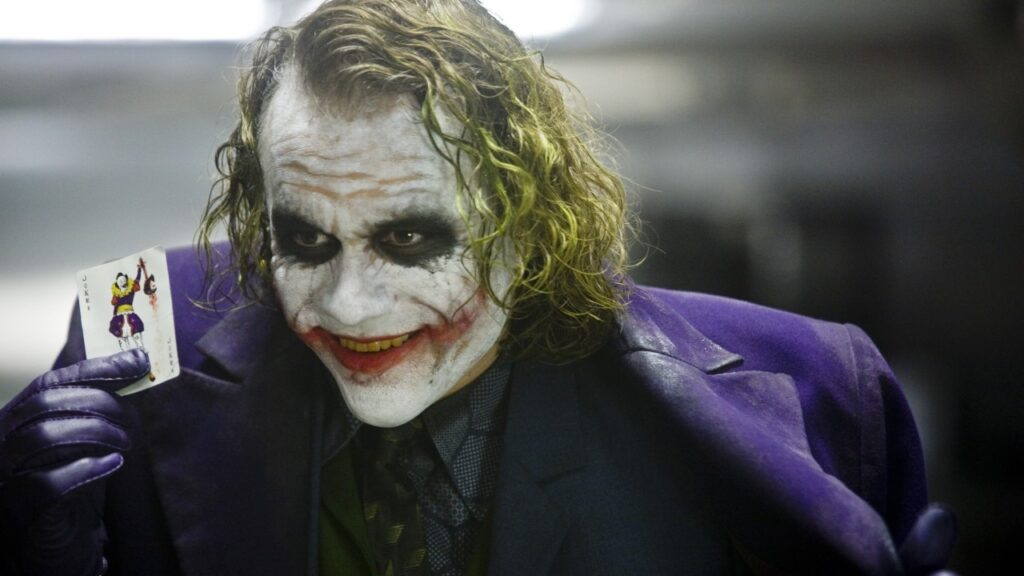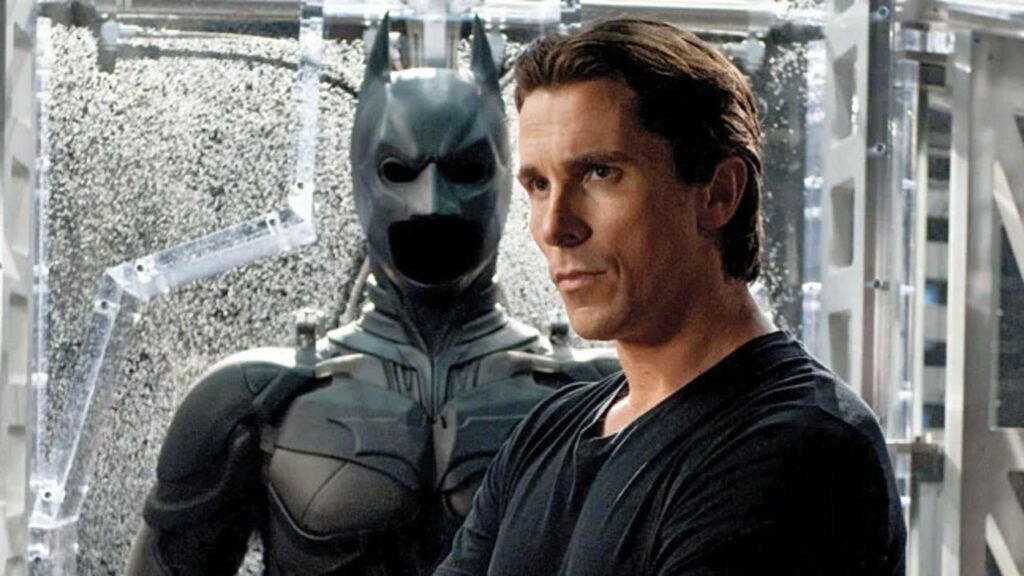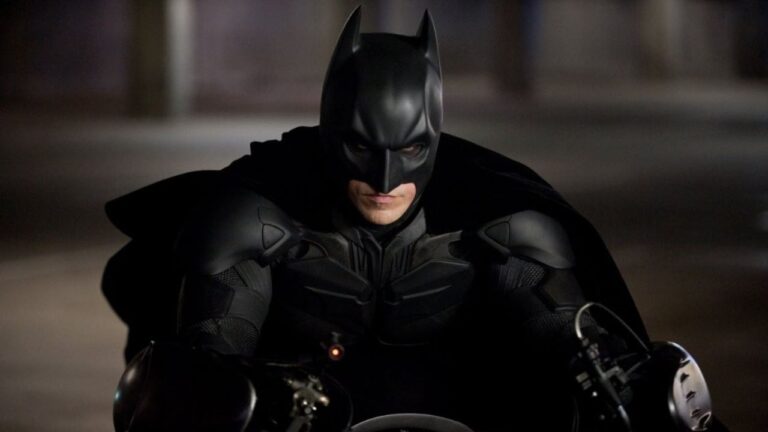When Christopher Nolan’s ‘The Dark Knight‘ hit the theatres back in 2008, audiences walked in expecting another Batman movie, but left the silver screen with utter profundity, because Christian Bale’s Batman was a genre-defining crime epic disguised as a superhero blockbuster. It was dark, ambitious, and deeply reflective, making it one of the most important films of the 21st century. Even sixteen years later, it still holds up as a benchmark for both comic book adaptations and mainstream cinema.
At its core, when we look at The Dark Knight, the movie is less about Batman punching villains and more about a city caught in a moral tug-of-war, because Gotham is crumbling under corruption and fear. And in this fragile ecosystem, Wayne’s morally grey antagonist, the Joker, was portrayed by the astonishing brilliance of Heath Ledger. His version of the character wasn’t the clownish prankster fans had known before, and keeping that in mind, Ledger gave us an agent of chaos, a man whose unpredictability was scarier than any weapon. He didn’t just commit crimes, he apparently made the city, and we, question its very sense of order.
Heath Ledger’s Joker, Christian Bale’s Batman, and the Moral Core of Gotham

This philosophical angle set the film apart. Nolan treated the material with a seriousness rarely seen in the genre. The Joker wasn’t just Batman’s enemy; he was his ideological opposite. Where Bale’s Batman represented structure and responsibility, the Ledger’s Joker symbolized chaos and destruction. Watching these two forces clash was intellectually riveting.
Much has been written about Heath Ledger’s Oscar-winning performance, and for good reason. Every gesture, every pause, every sly lick of his lips felt terrifyingly authentic. He turned the Joker into something elemental, a force of nature that couldn’t be predicted or contained, and it’s no exaggeration to say his performance elevated the entire film.
But Ledger wasn’t alone, and Christian Bale’s Batman, often overshadowed by the Joker, deserves credit for anchoring the story. His Bruce Wayne was brooding yet human, a man torn between personal sacrifice and public duty. Aaron Eckhart’s Harvey Dent delivered the film’s tragic heart, as his arc from shining district attorney to disfigured Two-Face was devastating, showing how thin the line between hero and villain can be. Add to that Michael Caine’s wise Alfred and Gary Oldman’s soulful Jim Gordon, and the supporting cast gave the film its emotional gravity.
Another reason The Dark Knight felt so fresh was Nolan’s commitment to realism, because the film is packed with stunning set-pieces, such as the opening bank heist, the truck flip in downtown Gotham, the tense ferry dilemma, and none of it felt like CGI spectacle. Nolan relied heavily on practical effects, which gave the action weight and believability. Even today, the truck flip scene remains one of the most astonishing stunts in modern cinema.
The use of IMAX cameras also deserves mention. Nolan was among the first big-name directors to embrace the format, and the sweeping cityscapes of Gotham gave audiences a cinematic experience unlike any superhero film before it. Hans Zimmer and James Newton Howard’s musical score also deserves special recognition. The musical score created by them consists of emotional drivers, heightening suspense, and amplifying the tension in ways that dialogue or visuals alone could not.
The Dark Knight excels in exploring duality, as the film constantly questions what it means to be good or evil. Batman, Harvey Dent, and the Joker each represent different responses to mayhem, fear, and power, and this exploration of morality gives the film depth that elevates it above standard action fare. Even the smallest choices or a simple coin flip are a decision to save one life over another, and feel momentous, illustrating Nolan’s genius in blending spectacle with philosophical inquiry.
Criticisms of The Dark Knight That Only Highlight Its Brilliance

Of course, no film is without its flaws. At 152 minutes, The Dark Knight occasionally feels overstuffed. The story juggles multiple arcs, and while most of them land, Harvey Dent’s transformation into Two-Face feels a little rushed in the final act. Some critics also point out that Batman himself takes a backseat to the Joker, reacting more than driving the plot. And then there’s Bale’s gravelly “Batman voice,” which sometimes borders on unintentional parody during emotional moments.
Yet, these criticisms pale in comparison to the film’s overall achievement. If anything, the imperfections remind us that this is a film made by human hands, not an algorithm, which is ambitious and messy at times, but bursting with vision.
What makes The Dark Knight truly special is its staying power, and surprisingly, it wasn’t just a box-office force of nature; after all, it changed how studios, filmmakers, and audiences viewed superhero films. It showed that these movies could be intelligent, morally complex, and artistically daring. Its influence can be seen everywhere, from Marvel’s attempts at grittier tones to DC’s continued pursuit of realism.
Most importantly, it gave audiences something to talk about. The Joker’s unnerving question, “Why so serious?” wasn’t just a catchphrase, because it created a challenge to us to look deeper, to see that beneath the spectacle was a story about humanity’s constant struggle between order and chaos, truly meant.
We can acknowledge The Dark Knight’s pacing issues, and its occasionally heavy-handed dialogue, as well as its uneven focus on Batman. But as film lovers and avid fans of Nolan, we cannot ignore its brilliance. It remains a near-perfect blend of action, drama, philosophy, and music, a movie that respects its audience enough to ask difficult questions while still delivering edge-of-your-seat thrills.
Simply put, Nolan didn’t just make a superhero movie; he made a modern classic. And that’s why The Dark Knight will always cast a long shadow, not just over Gotham, but over cinema itself.




